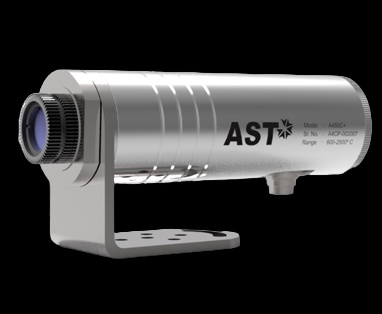In the world of industrial processes, precision and control are paramount. Temperature measurement is critical in ensuring product quality, process efficiency, and even safety. This is where pyrometers come into play. A pyrometer is a device used to measure high temperatures without physically contacting the object being measured. This blog post will explore the essential factors to consider when selecting a pyrometer for your specific industrial applications, emphasizing the importance of accuracy, temperature range, and other key features.
Understanding Industrial Pyrometers
Pyrometers are indispensable in various industries, including manufacturing, metallurgy, food processing, etc. They enable precise temperature measurement without direct contact with the object. This makes them suitable for applications with impractical or unsafe contact sensors.
The Significance of Accuracy
The accuracy of temperature measurements is crucial in industrial settings. Even minor deviations can lead to product defects, process inefficiencies, and safety hazards. To understand why accuracy matters, exploring how a pyrometer works is essential.
How Does a Pyrometer Work? A pyrometer operates on the principle of thermal radiation. All objects emit thermal radiation based on their temperature. Pyrometers detect and measure this radiation to determine the object's temperature. The accuracy of a pyrometer depends on its ability to capture and interpret this thermal radiation effectively.
Factors to Consider When Selecting a Pyrometer
The accuracy of a pyrometer is primarily determined by its design, calibration, and the quality of its components. When selecting a pyrometer, consider the following:
- Calibration and Traceability: Choose a calibrated and traceable pyrometer to recognized standards.
- Spectral Range: Ensure that the pyrometer's spectral range matches the radiation emitted by your target object.
- Emissivity Adjustability: Look for models that allow you to adjust emissivity settings to account for variations in the object's surface properties.
Temperature Range
Different industrial processes require pyrometers with specific temperature ranges. Select a pyrometer that can accurately measure the temperature range relevant to your application. For example, some processes may require pyrometers that measure temperatures exceeding 2,000 degrees Celsius. In contrast, others may need lower temperature ranges.
Emissivity Considerations
Emissivity is a measure of an object's ability to emit thermal radiation. It varies with material and surface finish. For accurate temperature measurements, it's essential to consider the emissivity of the measured object and select a pyrometer that can accommodate these variations. Modern pyrometers often allow users to adjust emissivity settings to account for different materials.
Response Time
In certain industrial processes, such as rapid heating or cooling, the response time of a pyrometer is critical. A pyrometer with a faster response time ensures that you get real-time temperature data, allowing you to make timely adjustments and maintain process control.
Environmental Conditions
Industrial environments can be harsh, with factors like dust, smoke, and humidity affecting pyrometer performance. Choose a pyrometer designed to withstand the specific environmental conditions of your application. Models with protective housings and features like air purges can help ensure reliable performance.
Types of Pyrometers
Pyrometers come in various types, including infrared, optical, and radiation-based models. Each type has its strengths and weaknesses, making them suitable for different industrial scenarios. Here's a brief overview:
- Infrared Pyrometers: These pyrometers measure temperature by detecting the infrared radiation emitted by the object. They are suitable for non-contact temperature measurements across a wide range of industries.
- Optical Pyrometers: Optical pyrometers use visible light to measure the temperature of an object by comparing its color to that of a calibrated filament. They are often used in metallurgy and glass manufacturing.
- Radiation-Based Pyrometers: These pyrometers measure temperature based on the intensity of thermal radiation. They are ideal for extreme temperature measurements in steel manufacturing and ceramics industries.
Real-World Examples
To illustrate the importance of selecting the right pyrometer, let's explore a couple of real-world examples:
Example 1: Steel Manufacturing
Accurate temperature measurement is crucial for controlling the steel's properties in a steel manufacturing plant. The plant achieves consistent quality and minimizes waste by using radiation-based pyrometers with the appropriate temperature range.
Example 2: Food Processing
In the food industry, optical pyrometers are employed to monitor the temperature of baked goods. These pyrometers ensure that products are perfectly cooked, guaranteeing taste and safety.
Selecting the Perfect Pyrometer for Your Industry
A thoughtful approach is essential when choosing the right pyrometer for your industrial needs. Here's a step-by-step guide to help you make an informed decision:
- Identify Your Temperature Range: Determine the temperature range required for your specific application.
- Consider Emissivity: Understand the emissivity of the materials you'll measure and select a pyrometer that can handle variations.
- Evaluate Response Time: Assess whether the process requires rapid temperature measurements and choose a pyrometer accordingly.
- Factor in Environmental Conditions: Account for environmental factors affecting pyrometer performance.
- Explore Pyrometer Types: Research the various types of pyrometers available and select the one that best suits your needs.
- Check for Calibration and Traceability: Ensure the pyrometer is calibrated and traceable to recognized standards.
Conclusion
Choosing the right pyrometer is critical for ensuring accurate temperature measurements in industrial settings. By considering factors such as accuracy, temperature range, emissivity, response time, and environmental conditions, you can select the perfect pyrometer for your specific needs. Remember that an informed choice can lead to improved product quality, enhanced process efficiency, and a safer work environment.


No comments yet